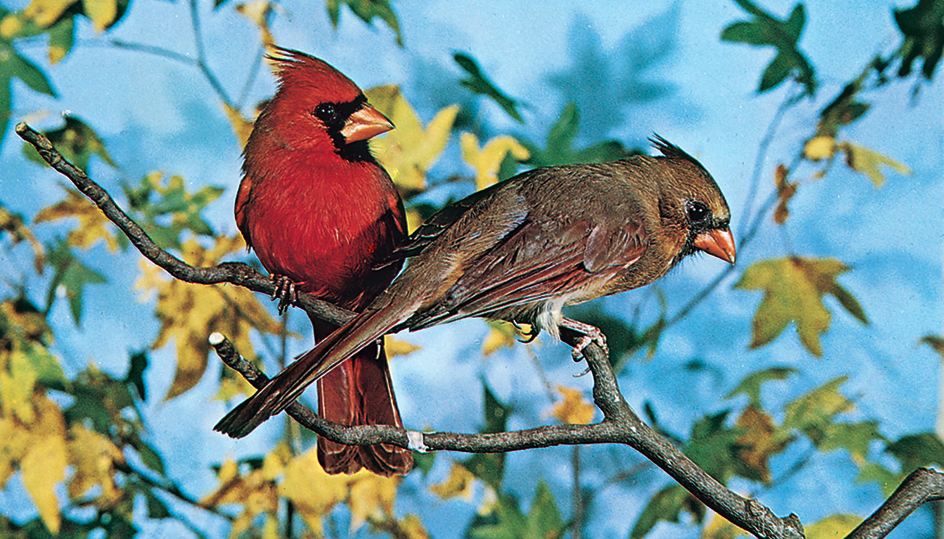Cardinal is a bird common throughout the eastern half of North America. Technically, it is known as the northern cardinal. It is sometimes called redbird. Cardinals live from southeastern North Dakota, central Minnesota, southern Ontario, and central Maine south to Florida, the Gulf of Mexico, Mexico, and Belize.
The cardinal measures about 7 to 9 inches (18 to 23 centimeters) long. It has a crest of feathers on its head that can be raised to threaten an enemy. Male cardinals are red with some gray on the back. A distinctive black marking around the eyes and at the base of the red-orange bill may reduce glare from the bill. Females are a brownish color with red in the wings, tail, and crest.

The female cardinal usually builds her nest 4 to 5 feet (1.2 to 1.5 meters) above the ground in dense shrubbery, tangles of vines, saplings, or small trees. The nest is made of weed stems, twigs, bark, leaves, and paper. The female typically lays three or four eggs, which are grayish-white with brown spots and many speckles. The female sits on the eggs, and the male finds food. The eggs hatch in 12 to 13 days. At first, both sexes feed the young. The male takes over the feeding entirely when the female builds a new nest for the next brood. Young cardinals leave the nest in about 10 days. The male continues to care for them for another 10 days. Cardinals may have up to four broods from April through August each year.
Loading the player...Cardinal
Cardinals feed on weed seeds, wild fruit, grain, worms, and beetles and other insects. In winter, they often seek food at feeders provided by people. Cardinals prefer sunflower seeds but also eat raisins, pieces of apple, bread, and millet. Young cardinals eat insects, including boll worms, cotton worms, codling moths, and potato beetles. Loading the player...
Cardinals eating
Both male and female cardinals have a wide variety of cheerful, flutelike songs. The birds were once trapped and sold as songbirds, and their brilliant feathers were used to decorate women’s hats. Cardinals are now protected by law.
